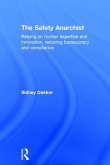Advances in Design for Cross-Cultural Activities Part II
Herausgeber: Nicholson, Denise M; Schmorrow, Dylan D
Advances in Design for Cross-Cultural Activities Part II
Herausgeber: Nicholson, Denise M; Schmorrow, Dylan D
- Gebundenes Buch
- Merkliste
- Auf die Merkliste
- Bewerten Bewerten
- Teilen
- Produkt teilen
- Produkterinnerung
- Produkterinnerung
This volume explores decision-making styles, including cooperative, collaborative, avoidant, competitive, and dominate that are commonly modified by the culture. Culture is not a stagnant phenomenon, and many variables need to be considered to accurately evaluation cultural differences in decision-making styles.
Andere Kunden interessierten sich auch für
![Cultural Factors in Systems Design Cultural Factors in Systems Design]() Cultural Factors in Systems Design157,99 €
Cultural Factors in Systems Design157,99 €![Delivering Resilient Health Care Delivering Resilient Health Care]() Delivering Resilient Health Care206,99 €
Delivering Resilient Health Care206,99 €![The Safety Anarchist The Safety Anarchist]() Sidney DekkerThe Safety Anarchist156,99 €
Sidney DekkerThe Safety Anarchist156,99 €![Simplicity in Safety Investigations Simplicity in Safety Investigations]() Ian LongSimplicity in Safety Investigations204,99 €
Ian LongSimplicity in Safety Investigations204,99 €![Visual and Non-Visual Effects of Light Visual and Non-Visual Effects of Light]() Agnieszka WolskaVisual and Non-Visual Effects of Light182,99 €
Agnieszka WolskaVisual and Non-Visual Effects of Light182,99 €![Safety Science Research Safety Science Research]() Safety Science Research204,99 €
Safety Science Research204,99 €![Engineering Psychology and Cognitive Ergonomics Engineering Psychology and Cognitive Ergonomics]() Engineering Psychology and Cognitive Ergonomics71,99 €
Engineering Psychology and Cognitive Ergonomics71,99 €-
-
-
This volume explores decision-making styles, including cooperative, collaborative, avoidant, competitive, and dominate that are commonly modified by the culture. Culture is not a stagnant phenomenon, and many variables need to be considered to accurately evaluation cultural differences in decision-making styles.
Hinweis: Dieser Artikel kann nur an eine deutsche Lieferadresse ausgeliefert werden.
Hinweis: Dieser Artikel kann nur an eine deutsche Lieferadresse ausgeliefert werden.
Produktdetails
- Produktdetails
- Verlag: CRC Press
- Seitenzahl: 470
- Erscheinungstermin: 11. Juli 2012
- Englisch
- Abmessung: 234mm x 157mm x 30mm
- Gewicht: 780g
- ISBN-13: 9781466556867
- ISBN-10: 1466556862
- Artikelnr.: 35427722
- Herstellerkennzeichnung
- Libri GmbH
- Europaallee 1
- 36244 Bad Hersfeld
- gpsr@libri.de
- Verlag: CRC Press
- Seitenzahl: 470
- Erscheinungstermin: 11. Juli 2012
- Englisch
- Abmessung: 234mm x 157mm x 30mm
- Gewicht: 780g
- ISBN-13: 9781466556867
- ISBN-10: 1466556862
- Artikelnr.: 35427722
- Herstellerkennzeichnung
- Libri GmbH
- Europaallee 1
- 36244 Bad Hersfeld
- gpsr@libri.de
Nicholson\, Denise M.; Schmorrow\, Dylan D.
Section I: Multifarious Modeling Discussions 1 Stable versus flexible
dynamic decision making across cultures: A growth mixture modeling approach
2 Creating the foundations for modeling irregular warfare 3 Granular ABM
simulations for operational use: Forecasting and what-if experiments with
models of Kandahar and Kunduz 4 Culture that works 5 Discovering entity
characteristics and relationships through topic Modelling 6 A
non-therapeutic, micro-worlds based, application of ACT (Acceptance and
Commitment Therapy) to fostering cross-cultural Competence 7 What lies
beneath: Forecast transparency to foster understanding and trust in
forecast models 8 Combining social and environmental models Section II:
Verification, Validation, and Assessment 9 Fundamentals in empirical
validation of and analysis with social science models 10 Al-Qa'ida through
a discursive lens 11 Countering the adversary 12 Interfacing and validating
models of the US Army TRAC tactical war game 13 Multi-modeling and
socio-cultural complexity: Reuse and validation 14 A V&V approach for
complex models: A use case example 15 Multi-modeling and meta-modeling of
human organizations 16 Verification as a form of validation: Deepening
theory to broaden application of DOD protocols to the social sciences 17
Establishing bounds of responsible operational use of social science models
via innovations in verification and validation 18 Contextual validation:
Concept and application Section III: Language, Trust, and Culture 19
Improvements in the Jabari event coder 20 Effect of culture on search
strategies 21 Using language to influencing another's decision 22 Assessing
attitudes in unstructured text 23 Analysis of discourse for indications and
warnings 24 Socio-linguistic factors and gender mapping across real and
virtual world cultures 25 The language of distance perception: Cultural and
linguistic implications in distance perception 26 Building trust in a
counterinsurgency context Section IV: Social Media and Culture 27 Social
networks, social media, social change 28 Identifying differences in
cultural behavior in online groups 29 Inferring demographic attributes and
extracting political discourse from Nigerian social media 30 The use of
microworlds in the study of dynamic decision making across cultures 31
Speech and cultural recognition in a virtual experiential environment 32
Network discovery: Measuring cause and effect behind event and social
networks 33 Cultural analytics through image features extraction and
exploration Section V: Social Science and Culture 34 How the Obama
Administration misconstrued the Arab Spring and repeated the errors of the
Bush Doctrine 35 The crisis of the West, the challenge of technology, and
the reaffirmation of political philosophy 36 American legal education and
the Supreme Court in the 1920s 37 The philosophical foundations of the
crisis of Western Civilization 38 A toolbox for countering extremist
religious truths 39 From particles to people: Social, cultural and
behavioral dynamics in insurgency, terrorism and beyond 40 What is
cross-culture? 41 Socio-cultural modeling through decision-theoretic agents
with theory of mind 42 Predictive societal indicators of radicalism -
Forecasting political Violence 43 Population sentiment modeling in support
of ISAF Joint Command 44 Semantic integration of socio-cultural knowledge
for complex operations
dynamic decision making across cultures: A growth mixture modeling approach
2 Creating the foundations for modeling irregular warfare 3 Granular ABM
simulations for operational use: Forecasting and what-if experiments with
models of Kandahar and Kunduz 4 Culture that works 5 Discovering entity
characteristics and relationships through topic Modelling 6 A
non-therapeutic, micro-worlds based, application of ACT (Acceptance and
Commitment Therapy) to fostering cross-cultural Competence 7 What lies
beneath: Forecast transparency to foster understanding and trust in
forecast models 8 Combining social and environmental models Section II:
Verification, Validation, and Assessment 9 Fundamentals in empirical
validation of and analysis with social science models 10 Al-Qa'ida through
a discursive lens 11 Countering the adversary 12 Interfacing and validating
models of the US Army TRAC tactical war game 13 Multi-modeling and
socio-cultural complexity: Reuse and validation 14 A V&V approach for
complex models: A use case example 15 Multi-modeling and meta-modeling of
human organizations 16 Verification as a form of validation: Deepening
theory to broaden application of DOD protocols to the social sciences 17
Establishing bounds of responsible operational use of social science models
via innovations in verification and validation 18 Contextual validation:
Concept and application Section III: Language, Trust, and Culture 19
Improvements in the Jabari event coder 20 Effect of culture on search
strategies 21 Using language to influencing another's decision 22 Assessing
attitudes in unstructured text 23 Analysis of discourse for indications and
warnings 24 Socio-linguistic factors and gender mapping across real and
virtual world cultures 25 The language of distance perception: Cultural and
linguistic implications in distance perception 26 Building trust in a
counterinsurgency context Section IV: Social Media and Culture 27 Social
networks, social media, social change 28 Identifying differences in
cultural behavior in online groups 29 Inferring demographic attributes and
extracting political discourse from Nigerian social media 30 The use of
microworlds in the study of dynamic decision making across cultures 31
Speech and cultural recognition in a virtual experiential environment 32
Network discovery: Measuring cause and effect behind event and social
networks 33 Cultural analytics through image features extraction and
exploration Section V: Social Science and Culture 34 How the Obama
Administration misconstrued the Arab Spring and repeated the errors of the
Bush Doctrine 35 The crisis of the West, the challenge of technology, and
the reaffirmation of political philosophy 36 American legal education and
the Supreme Court in the 1920s 37 The philosophical foundations of the
crisis of Western Civilization 38 A toolbox for countering extremist
religious truths 39 From particles to people: Social, cultural and
behavioral dynamics in insurgency, terrorism and beyond 40 What is
cross-culture? 41 Socio-cultural modeling through decision-theoretic agents
with theory of mind 42 Predictive societal indicators of radicalism -
Forecasting political Violence 43 Population sentiment modeling in support
of ISAF Joint Command 44 Semantic integration of socio-cultural knowledge
for complex operations
Section I: Multifarious Modeling Discussions 1 Stable versus flexible
dynamic decision making across cultures: A growth mixture modeling approach
2 Creating the foundations for modeling irregular warfare 3 Granular ABM
simulations for operational use: Forecasting and what-if experiments with
models of Kandahar and Kunduz 4 Culture that works 5 Discovering entity
characteristics and relationships through topic Modelling 6 A
non-therapeutic, micro-worlds based, application of ACT (Acceptance and
Commitment Therapy) to fostering cross-cultural Competence 7 What lies
beneath: Forecast transparency to foster understanding and trust in
forecast models 8 Combining social and environmental models Section II:
Verification, Validation, and Assessment 9 Fundamentals in empirical
validation of and analysis with social science models 10 Al-Qa'ida through
a discursive lens 11 Countering the adversary 12 Interfacing and validating
models of the US Army TRAC tactical war game 13 Multi-modeling and
socio-cultural complexity: Reuse and validation 14 A V&V approach for
complex models: A use case example 15 Multi-modeling and meta-modeling of
human organizations 16 Verification as a form of validation: Deepening
theory to broaden application of DOD protocols to the social sciences 17
Establishing bounds of responsible operational use of social science models
via innovations in verification and validation 18 Contextual validation:
Concept and application Section III: Language, Trust, and Culture 19
Improvements in the Jabari event coder 20 Effect of culture on search
strategies 21 Using language to influencing another's decision 22 Assessing
attitudes in unstructured text 23 Analysis of discourse for indications and
warnings 24 Socio-linguistic factors and gender mapping across real and
virtual world cultures 25 The language of distance perception: Cultural and
linguistic implications in distance perception 26 Building trust in a
counterinsurgency context Section IV: Social Media and Culture 27 Social
networks, social media, social change 28 Identifying differences in
cultural behavior in online groups 29 Inferring demographic attributes and
extracting political discourse from Nigerian social media 30 The use of
microworlds in the study of dynamic decision making across cultures 31
Speech and cultural recognition in a virtual experiential environment 32
Network discovery: Measuring cause and effect behind event and social
networks 33 Cultural analytics through image features extraction and
exploration Section V: Social Science and Culture 34 How the Obama
Administration misconstrued the Arab Spring and repeated the errors of the
Bush Doctrine 35 The crisis of the West, the challenge of technology, and
the reaffirmation of political philosophy 36 American legal education and
the Supreme Court in the 1920s 37 The philosophical foundations of the
crisis of Western Civilization 38 A toolbox for countering extremist
religious truths 39 From particles to people: Social, cultural and
behavioral dynamics in insurgency, terrorism and beyond 40 What is
cross-culture? 41 Socio-cultural modeling through decision-theoretic agents
with theory of mind 42 Predictive societal indicators of radicalism -
Forecasting political Violence 43 Population sentiment modeling in support
of ISAF Joint Command 44 Semantic integration of socio-cultural knowledge
for complex operations
dynamic decision making across cultures: A growth mixture modeling approach
2 Creating the foundations for modeling irregular warfare 3 Granular ABM
simulations for operational use: Forecasting and what-if experiments with
models of Kandahar and Kunduz 4 Culture that works 5 Discovering entity
characteristics and relationships through topic Modelling 6 A
non-therapeutic, micro-worlds based, application of ACT (Acceptance and
Commitment Therapy) to fostering cross-cultural Competence 7 What lies
beneath: Forecast transparency to foster understanding and trust in
forecast models 8 Combining social and environmental models Section II:
Verification, Validation, and Assessment 9 Fundamentals in empirical
validation of and analysis with social science models 10 Al-Qa'ida through
a discursive lens 11 Countering the adversary 12 Interfacing and validating
models of the US Army TRAC tactical war game 13 Multi-modeling and
socio-cultural complexity: Reuse and validation 14 A V&V approach for
complex models: A use case example 15 Multi-modeling and meta-modeling of
human organizations 16 Verification as a form of validation: Deepening
theory to broaden application of DOD protocols to the social sciences 17
Establishing bounds of responsible operational use of social science models
via innovations in verification and validation 18 Contextual validation:
Concept and application Section III: Language, Trust, and Culture 19
Improvements in the Jabari event coder 20 Effect of culture on search
strategies 21 Using language to influencing another's decision 22 Assessing
attitudes in unstructured text 23 Analysis of discourse for indications and
warnings 24 Socio-linguistic factors and gender mapping across real and
virtual world cultures 25 The language of distance perception: Cultural and
linguistic implications in distance perception 26 Building trust in a
counterinsurgency context Section IV: Social Media and Culture 27 Social
networks, social media, social change 28 Identifying differences in
cultural behavior in online groups 29 Inferring demographic attributes and
extracting political discourse from Nigerian social media 30 The use of
microworlds in the study of dynamic decision making across cultures 31
Speech and cultural recognition in a virtual experiential environment 32
Network discovery: Measuring cause and effect behind event and social
networks 33 Cultural analytics through image features extraction and
exploration Section V: Social Science and Culture 34 How the Obama
Administration misconstrued the Arab Spring and repeated the errors of the
Bush Doctrine 35 The crisis of the West, the challenge of technology, and
the reaffirmation of political philosophy 36 American legal education and
the Supreme Court in the 1920s 37 The philosophical foundations of the
crisis of Western Civilization 38 A toolbox for countering extremist
religious truths 39 From particles to people: Social, cultural and
behavioral dynamics in insurgency, terrorism and beyond 40 What is
cross-culture? 41 Socio-cultural modeling through decision-theoretic agents
with theory of mind 42 Predictive societal indicators of radicalism -
Forecasting political Violence 43 Population sentiment modeling in support
of ISAF Joint Command 44 Semantic integration of socio-cultural knowledge
for complex operations








